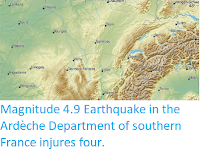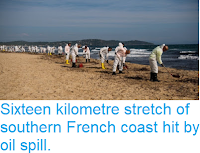Two skiers have been injured in an avalanche at the Valfréjus ski resort in the Savoie Department of France on Saturday 23 November 2019. The incident happened on the Col ski piste above the Arrondaz Plateau at an altitude of about 2300 m above sealevel. The injured skiers are reported to have been part of a party of three pensioners from Lyon, plus a guide in their 30s. They were dug out by friends and airlifted to a hospital in Saint-Jean-de-Maurienne. The incident is reported to have been caused by a layer of loose fresh snow forming above a more compacted layer of older snow, with little adhesion between the two layers, so that the upper layer gave way when disturbed.
The approximate location of the 23 November 2019 Col d'Arrondaz avalanche. Google Maps.
Avalanches are caused by the mechanical failure of snowpacks;
essentially when the weight of the snow above a certain point exceeds
the carrying capacity of the snow at that point to support its weight.
This can happen for two reasons, because more snow falls upslope,
causing the weight to rise, or because snow begins to melt downslope,
causing the carrying capacity to fall. Avalanches may also be triggered
by other events, such as Earthquakes or rockfalls. Contrary to what is
often seen in films and on television, avalanches are not usually
triggered by loud noises. Because snow forms layers, with each layer
typically occurring due to a different snowfall, and having different
physical properties, multiple avalanches can occur at the same spot,
with the failure of a weaker layer losing to the loss of the snow above
it, but other layers below left in place - to potentially fail later.
Diagrammatic representation of an avalanche, showing how layering of snow contributes to these events. Expedition Earth.
See also...
Follow Sciency Thoughts on Facebook.








